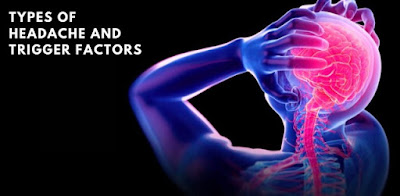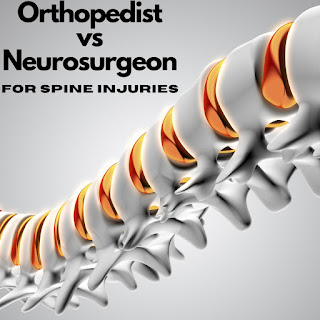Best doctor for headache in rohini - types of headache and trigger factors
Many people face different types of headaches every day. Sometimes painkillers do not help and your headache worsens. Due to this headache you feel sick, nauseous and feel light or noisy and painful. Headaches can be more complicated than most people realize. Different types of headaches can have their own set of symptoms, have unique causes, and require different treatments.
Types of Headache
According to Dr. Shailesh Jain AIIMS Neurosurgeon, There are over 150 types of headaches, but the most common types include:
Common Type of Headaches:
1) Tension Headache
Tension headaches cause mild, moderate, or intense pain behind your eyes and in your head and neck. This tension headache feels like a tight band around their forehead. These tension headaches occur one or two times per month on average. Tension headache caused by muscle contractions (Types of contractions: Foods, Activities, Stressors) in the head and neck regions, Cold Temperature and staring at a computer/ Laptop screen for a long time.
2) Migraine Headache
A migraine headache causes moderate to severe pain. The pain is often described as throbbing or quivering and usually begins on one side of the head. Migraine headache worsens with physical activity, light, sound, or physical movements. The pain usually lasts 4 hours to 3 days. You can be sensitive to light, sound and even smell. And you may also experience nausea and / or vomiting. If left untreated, the headache will be moderate to severe.
3) Cluster Headache
Cluster headaches, which occur in cyclical patterns and one of the most painful Headache. A cluster headache usually wakes up in the middle of the night with intense pain on one side of your head or around one eye. Cluster headache is rare and not life-threatening. Treatments can make cluster headache attacks less severe. Medications can reduce the cluster headaches you have. Cluster headache symptoms include One-sided pain, Restlessness, Excessive tearing, Redness of your eye on the affected side, Stuffy nose on the affected side, Forehead or facial sweating on the affected side, Pale skin (pallor) or flushing on your face, Swelling around your eye on the affected side, Drooping eyelid on the affected side, etc.
4) Chronic Daily Headache
If you have a headache from time to time, you might have chronic daily headaches.It refers to how often the headaches occur and how long the condition lasts. Chronic daily headaches occur 15 days or more a month, for longer than three months. There are short-lasting and long-lasting chronic daily headaches and it includes Chronic migraine, Chronic tension-type headache, New daily persistent headache, Hemicrania continua etc.
5) Sinus Headache
Your sinuses are air-filled spaces inside your forehead, cheekbones, and behind the bridge of your nose. usually it happens because of an allergic reaction or an infection - they swell, make more mucus, and the channels that drain them can get blocked. Sinus Headache includes a runny and stuffy nose, feeling of fullness in your eyes, fever, swelling in your face.
6) Post Traumatic Headaches
Post Traumatic Headache is defined as a secondary headache that develops within 7 days after head trauma. Post traumatic headaches include a dull ache that gets worse from time to time, Trouble concentrating, Memory problems, Lightheadedness, Irritability, etc.
Less Common Headache
1) Exercise Headache
Exercise headache occurs during or after a strenuous exercise. Some of the activities associated with exercise headaches include running, rowing, tennis, swimming and weight lifting. Exercise headaches are divided into two categories, Primary Exercise Headache ( Harmless and can often be prevented with medication) and Secondary Exercise Headache ( Severe, can be caused by bleeding or a tumor and coronary artery disease). Primary exercise headaches typically last between five minutes and 48 hours, while secondary exercise headaches usually last for at least one day and sometimes for several days or longer.
2) Hemicrania Continua
Hemicrania continua causes pain on one side of your face or head and women seem to get it more often than men. People with hemicrania continua describe a dull ache or throb that’s interrupted by pain that is jolting, sharp and stabbing. HC usually happens three to five times a day or months or years. HC causes vomiting, throbbing pain, sensitivity to noise or light.
3) Hormone Headache
Hormone Headaches can be caused by many factors, including genetics and dietary triggers. In women, unstable hormone levels are a major contributing factor in chronic headaches and menstrual migraines. A variety of medications and other treatments are used to relieve headaches. Women who experience hormonal headaches often get relief during pregnancy or when they reach menopause. Hormone levels change for a variety of reasons, including Menstrual cycle, Pregnancy, Perimenopause, menopause, Oral contraceptives and hormone replacement therapy, etc.
4) New Daily Persistent Headache
The new daily persistent headache (NDPH) is a chronic headache that is developing as a person who has no previous history of headache. The headache starts intensely and reaches its peak within 3 days. NDPS is similar to migraine, Hemicrania Continua and chronic tension type headache. It's usually either throbbing like a migraine or tightening like a tension headache, Vomiting, Nausea, etc.
5) Rebound Headache
Rebound headache happens because of medication overuse and caused by the excessive use of pain-relieving and/or antimigraine drugs to treat headache attacks that are already in progress. Rebound headache symptoms can include nausea, vomiting, light sensitivity, sound sensitivity, irritability, difficulty concentrating, insomnia, restlessness, and constipation.
Rare Headache
1) Ice Pick Headache
Ice pick headaches are throbbing, severe headaches that come on suddenly. They’re often described as feeling like a stabbing blast, or a series of stabs, from an ice pick. This type of headache gives no warning before striking, and can be excruciating and debilitating and typically lasting no longer than a minute.
2) Spinal Headache
Spinal headache is a fairly common complication in people who undergo a spinal tap (lumbar puncture) or spinal anesthesia. Spinal headache symptoms include Dull, throbbing pain and pain that typically gets worse when you sit up or stand and decreases or goes away when you lie down.
3) Thunderclap Headache
These severe headache pain occurs within 60 seconds. Thunderclap Headache is the worst headache because it Strikes suddenly and severely and Can be accompanied by nausea or vomiting. Thunderclap headache causes by bleeding between the brain and membranes covering the brain, a rupture of a blood vessel in the brain, a tear in the lining of an artery that supplies blood to the brain, Leaking of cerebrospinal fluid, Death of tissue or bleeding in the pituitary gland, Ischemic stroke, etc
Trigger factors of Headache by Dr. Shailesh Jain
We have already covered some of the triggering factors of headache in "Headache factors and its management". Therefore, in today's blog we are discussing some environmental and other triggering factors of headaches, including:
Menstruation - Studies suggest that Headache can be triggered by a drop in oestrogen levels such as those which naturally occur in the time just before your period.
Cigarette - Both smoking and inhaling secondhand smoke can trigger a headache. Nicotine is a vasoactive substance in cigarettes. That means it changes the size of blood vessels in your brain, and that can cause headache.
Weather - Weather changes may cause imbalances in brain chemicals, including serotonin, which can prompt a headache.
Crying - The stress that the body releases, which causes crying, can also trigger a headache to occur in a person prone to them. Mostly emotional crying can trigger Headache.
Odour - Strong or unusual smells trigger their headaches. Clinical studies report that anywhere between 25 and 50 percent of sufferers experience a heightened sensitivity to odors during their headaches.
Eye strain - When your eyes work too hard, your eye muscles can shrink a lot. These contractions can trigger an eye strain headache. Often, these headaches cause pain and discomfort behind your eyes. After focusing on a task for a very long time, you may get a headache in the eye.
Cold - When you suffer from a cold or flu, a headache can occur thanks to infection-fighting molecules known as "cytokines". These small molecules are released by your immune system. While their primary function is to fight infection, they can bring on inflammation which in turn can cause headaches in some people.
Sun - Sunlight is also constantly reported as a trigger for Headache. In fact, as many as 67% of people with headache cite bright light as a trigger, according to a recent survey.
Not eating - Fasting, eating high-sugar foods, eating too vigorously, and skipping meals can all be trigger factors, or people may be more likely to have headaches.
Noise - Extremely loud or prolonged sounds can trigger headaches. Any loud noise such as a rock concert, parties can set off head pain.
Sleep - Missing sleep, getting too much sleep can trigger Headache. Insufficient sleep is often cited as a trigger for acute headache attacks. Excessive sleep is a frequently reported trigger as well. Researchers have reported that between 20 percent of people say stress triggers their headaches.
Stress - Physical or physiological stress at work and home can cause Headache. Researchers have reported that between 50 and 80 percent of people say stress triggers their headaches.
About Dr. Shailesh Jain - Best Neurologist in Rohini
Dr. Shailesh Jain AIIMS Neurosurgeon is the Best doctor for headache in Rohini. He is a Reputed Doctor, he gives his undivided attention to all his patients. He treats his patients in his own neurology center at Arihant Neurospine Clinic at Pitampura and Rohini as well as Max Super Speciality Hospital, Shalimar Bagh Branch.
You can Book an appointment for any kind of spinal cord Treatment as well as Brain Treatment.




Comments
Post a Comment